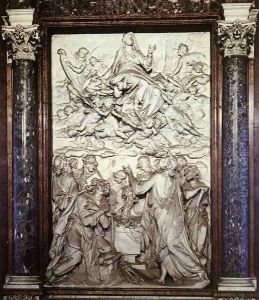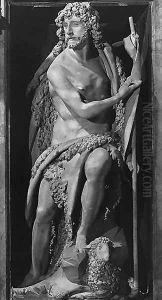Pietro Bernini Paintings
Pietro Bernini, also known as Pietro Bernardino, was an Italian sculptor and architect who played a significant role in the Roman Baroque style of the early 17th century. Born in 1562 in Tuscany, Italy, Bernini started his career in the northern regions of Italy, particularly in Florence and Parma. However, it is his work in Rome that he is most noted for, where he eventually moved and spent most of his life.
Pietro Bernini's contributions to art are often overshadowed by the achievements of his more famous son, Gian Lorenzo Bernini, who is considered one of the greatest artists of the Baroque period. Nonetheless, Pietro was an accomplished artist in his own right. He worked on various commissions for churches and other institutions, demonstrating his skills in both sculpture and architecture. His works include the fountain in the Piazza Santa Maria in Trastevere in Rome and a collaboration with his son on the Barcaccia Fountain at the foot of the Spanish Steps.
Bernini's style was characterized by a transition from the classicism of the Renaissance to the more dynamic and expressive qualities of the Baroque. His sculptures often featured movement and emotional intensity, which would become hallmarks of his son's more mature work. Pietro Bernini also contributed to the decoration of major Roman churches and palaces, leaving a legacy of art that contributed to the city's artistic heritage.
He died in Rome in 1629, leaving behind a body of work that, while perhaps not as widely recognized as that of Gian Lorenzo, still represents an important chapter in the development of Italian art. Pietro Bernini's influence can be seen in the early training and style of his son, who would go on to revolutionize Baroque art with his dramatic sculptures and architectural designs.



